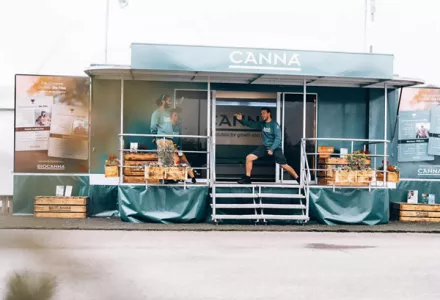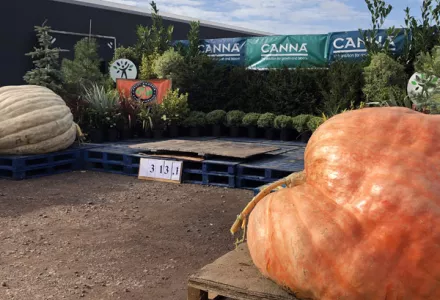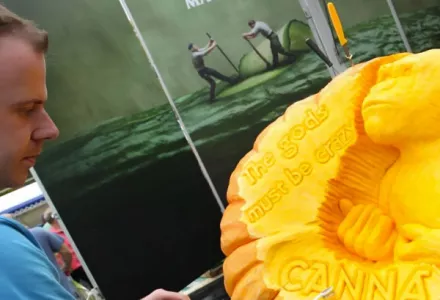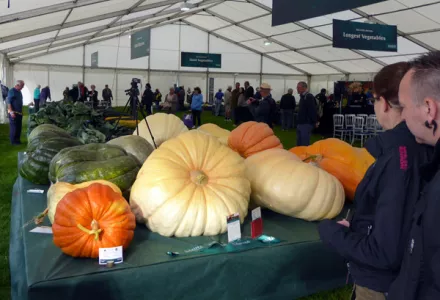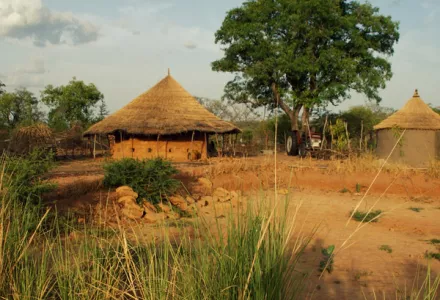Peter Geyelin is an amateur grower from England with a love of all things orange. After acquiring a significant area of growing space in 2009, Peter grew a vast range or fruit and vegetables for home use. That was until he discovered the mighty Atlantic Giant pumpkin!
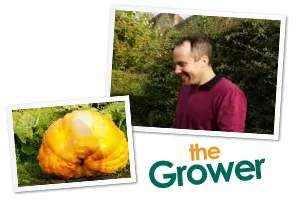
Peter has been passionate about pumpkins ever since growing a 224 kg monster pumpkin in 2011 and now he grows little else.
After just 2 years of growing giant pumpkins, Peter won both the coveted 1st place at the York Giant Pumpkin competition in 2013 with a 443.8 kg pumpkin and 3rd place at the Royal Horticulture Society (RHS) in London with a 398.6 kg orange beauty. Peter returned to London in 2014 and won 1st place at the RHS show.
The Project
As a Chemist by training, Peter's methodical approach and desire to advance his growing techniques in the pursuit of a 500 kg pumpkin and beyond certainly caught our attention!
As such, CANNA is delighted to assist Peter to achieve his goal through the CANNA Sponsored Giant Pumpkin Project 2015. For the project, Peter will be growing 3 pumpkin plants:
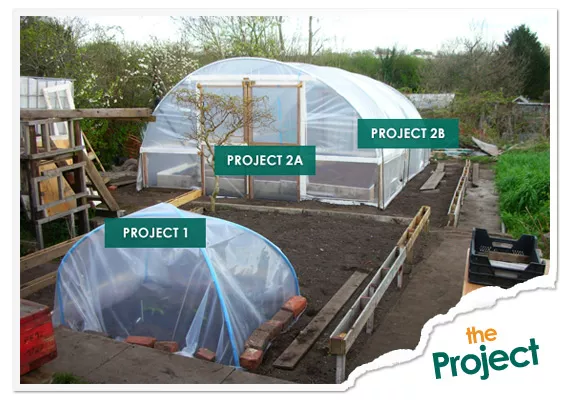
| Project | 1 | 2a | 2b |
|---|---|---|---|
| Growing medium: | Soil | Soil | CANNA Coco Professional Plus |
| Location: | Outdoor | Polytunnel | Polytunnel |
| Patch dimensions: | 10' x 15' | 16' x 23' | 16' x 23' |
| Root area (sq ft): | 150 | 150 | 368 |
| Vegetation area (sq ft): | 150 | 150 (Polytunnel) 218 (Outdoor) | 150 (Polytunnel) 218 (Outdoor) |
| Seed: | 1738 or 1916 Barron | 1626 D. Gantner | 1626 D. Gantner |
| CANNA nutrient: | Terra Vega (3-1-4) & Terra Flores (2-2-4) | Terra Vega (3-1-4) & Terra Flores (2-2-4) | Coco A & B (5-4-3) |
To give the project every bit of success, Peter has built a dedicated Polytunnel to house projects 2a and 2b. The CANNA TERRA nutrient line will be used for projects 1 and 2a, which we believe in combination with CANNA additives (RHIZOTONIC, PK 13/14 and CANNABOOST Accelerator) and CANNA Mononutrients, will provide complete nutrition through the vegetative period all the way to the harvest of a 500 kg plus orange pumpkin.
Moreover, we believe that the complex water/air system of CANNA Coco Professional Plus (Project 2b); will provide ideal root zone conditions not present in soil. However, the onus will be on Peter to perfect his growing in Coco but we will be there every step of the way to share our expertise.
FACT: The Atlantic Giant can be grown to gargantuan sizes! The current World Record is 1,054 kg by Beni Meier of Switzerland.

